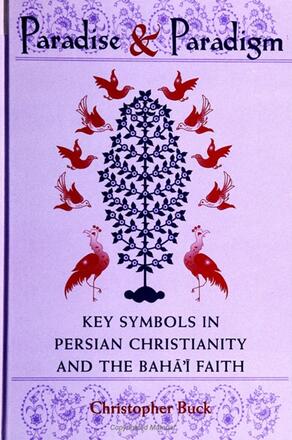
Paradise and Paradigm
Key Symbols in Persian Christianity and the Baha'i Faith
Alternative formats available from:
Comparing paradise imagery in two Persian religions, early Syriac Christianity and the Baha'i Faith, this work contributes to religious studies methodology by introducing "symbolic paradigm analysis. "
Description
In a novel approach that the author terms "symbolic paradigm analysis," Paradise and Paradigm offers a "theoretically modular" systematic comparison of two "Persian" religions: early Syriac Christianity as the foundation of the East Syrian "Church of the East" (the Nestorian Church of Persia) and the Baha'i Faith, a new world religion. The author compares the hymns of the greatest poet of early Christianity, Saint Ephrem the Syrian, and the richly imagistic writings of the founder of the Baha'i religion, Baha'u'llah. The book employs an original analytic technique in the creation of "symbolic profiles" constructed on Ninian Smart's dimensional model of religion. As Buck skillfully demonstrates, formal similarities between any two religions are best comprehended in terms of paradigmatic differences, which nuance all parallels through a process of symbolic transformation. Buck also shows the communal reflexivity of paradise imagery in representing the ideal faith-community in both traditions.
Christopher Buck is Assistant Professor in the Department of Religion at Millikin University. He is the author of Symbol and Secret: Qur'an Commentary in Baha'u'llah's Kitab-i Iqan, the 1996 Baha'i Book of the Year. Buck is also a two-time recipient of the Award for Excellence in Baha'i Studies, presented by the Association for Baha'i Studies.
Reviews
"If the Baha'i Faith has a specialist in comparative religion, it is Christopher Buck … This volume is certainly … the best comparative work on the Baha'i Faith and another religious tradition that has yet appeared, and may serve as a model for future such studies. " — The Baha'i Studies Review
"Christopher Buck's project is a success both as a methodological experiment and as practical comparative effort … As a piece of Baha'i scholarship, it remains unparalleled. In terms of academic comparative efforts involving the Baha'i Faith, Buck's book is a pioneering work. " — H-Net Reviews (H-Baha'i)
"…the book's four central chapters offer separate historical and symbolic profiles, first of Syriac Christianity and then of the Baha'i faith. Buck has packed these chapters with fascinating detail, assembling a wealth of background unavailable elsewhere in any single volume that I am aware of … Paradise and Paradigm is a goldmine of information about two relatively little studied but fascinating developments in Middle Eastern religious history … a very worthwhile contribution. " — Middle East Studies Association of North America
"This is a provocative and groundbreaking work. Its careful attention to methodology and its attempt to work through the project with the attitude of experimentation will provide a significant impulse to the study of religion, especially in relationship to the symbol systems, which religions contain. " — University of Toronto Quarterly
"This is an extremely powerful contribution to an important part of comparative religions, and will establish its author as a major academic scholar. Its purpose is to compare the symbologies of early pre-Muslim Persian (Sassanian) Christianity, especially in the work of Ephrem the Syrian, with the late nineteenth century Persian religion of the Bahai's, post-Islamic, as centered in the writings of Baha'u'llah. The symbolic center of the comparison is the family of symbols having to do with paradise. Both in its methodology and its scholarly treatments of Persian Christianity and Baha'i Faith, the book is insightful. It gives its subjects allure. " -- Robert Cummings Neville, author of The Truth of Broken Symbols
"This work is a model of comparison, an eye-opener regarding the interesting Syriac Christian traditions, and quite a useful and revealing account of the Baha'i. " — William Paden, University of Vermont